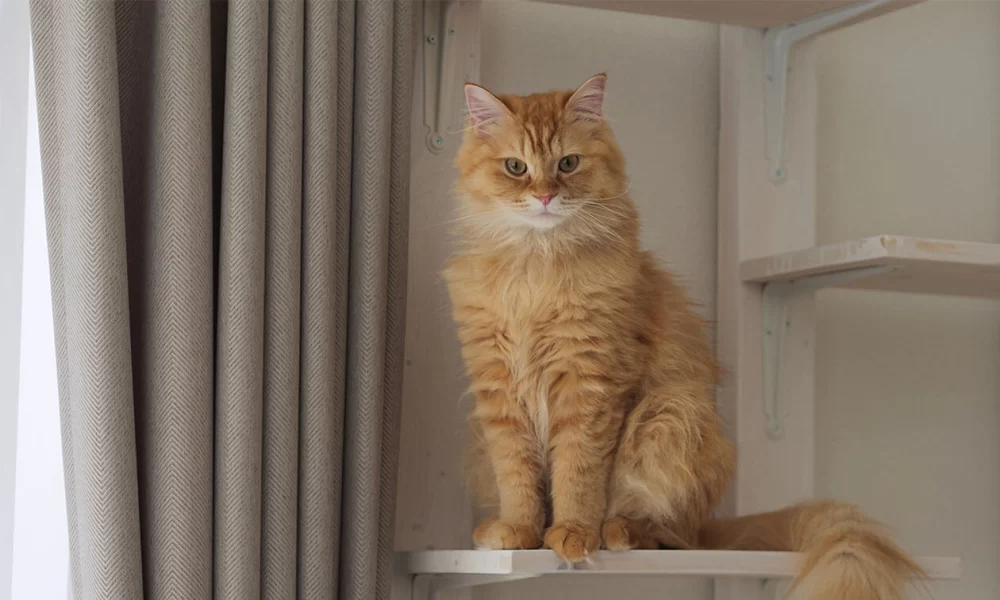- Why Cats Avoid Certain Areas in the House
- Common Reasons for Cat Anxiety and Fear
- How to Help Your Cat Feel Comfortable in Every Space
- Real-Life Examples and Solutions
Why Cats Avoid Certain Areas in the House
Have you noticed that your cat tends to avoid certain places in the house, like specific rooms or corners? This behavior can be puzzling, but it’s actually more common than you might think. Understanding why your cat avoids certain areas requires an understanding of feline behavior and the factors that influence their comfort levels. Cats are creatures of habit, and they tend to avoid places where they feel insecure, unsafe, or uncomfortable. But what exactly causes these aversions?
Environmental Factors
Cats are sensitive to their environment. Loud noises, bright lights, and unfamiliar smells can make them feel anxious. For instance, if a cat has had a negative experience in a particular room, such as being startled by a vacuum cleaner or another pet, they may start associating that space with fear and discomfort. Cats may also avoid rooms with heavy foot traffic or places where they can't easily escape if they feel threatened.
Health and Pain
If your cat suddenly starts avoiding a specific area of the house, it could be a sign of an underlying health issue. Cats in pain often retreat to secluded areas and avoid parts of the house that may require them to move more or exert themselves. It’s important to consider your cat’s health and see if there are any signs of discomfort that could be contributing to this behavior.
Common Reasons for Cat Anxiety and Fear
Cat anxiety is a key factor in why they may avoid certain places in the house. Just like humans, cats experience fear and anxiety in different situations. Recognizing these triggers is crucial for helping your cat feel safe again.
Changes in the Home
When there are changes in the home, such as new furniture, a renovation, or the arrival of a new pet, it can cause stress for your cat. Cats are creatures of routine, and any disruption can make them feel uncertain. This could lead them to avoid areas that have been altered or places where they no longer feel safe.
Past Traumatic Experiences
If a cat had a traumatic experience in a particular area, such as an accident, loud noises, or even a negative interaction with another animal, they may start avoiding that place out of fear. Repeated exposure to stressors can lead to heightened anxiety in cats, making it essential to create safe, calming spaces for them to feel secure.
Overstimulation or Lack of Escape
Some cats become overstimulated by too much attention or activity in certain areas. A place with constant activity might overwhelm your cat, leading them to avoid it. Similarly, if your cat cannot easily escape to a quieter or safer area, they may avoid the space altogether.
How to Help Your Cat Feel Comfortable in Every Space
If your cat is avoiding certain parts of your house, there are several strategies you can try to help them feel more at ease. Here are some helpful tips for creating a comfortable and safe environment for your cat.
Provide Safe Spaces
Give your cat a designated space where they can retreat to when they need a break. This could be a quiet room or a cozy bed in a calm corner. Make sure the space is free from noise and distractions, so your cat can feel safe and secure. Cats love to have a place to call their own where they can relax without being disturbed.
Gradual Exposure
If your cat is avoiding a particular area due to fear or anxiety, gradually reintroduce them to the space in a positive and non-threatening way. Use treats, toys, or their favorite blanket to create positive associations with the area. Over time, your cat may become more comfortable returning to the space.
Reduce Stress Triggers
Identify and minimize any stress triggers in your home. For example, if loud noises or the presence of other pets are causing anxiety, try to limit exposure to these stressors. You might also consider playing calming music or using pheromone diffusers to help your cat feel more relaxed in stressful environments.
Real-Life Examples and Solutions
Let’s take a look at a real-life scenario where a cat owner struggled with their feline avoiding a particular space in the home. Sarah, a cat mom to an adorable tabby named Bella, noticed that Bella began avoiding the living room after a recent move. Initially, Sarah thought Bella was just adjusting to the new environment. However, after observing Bella’s behavior more closely, she realized that Bella was avoiding the area because of the constant activity in the room—family gatherings, loud TV shows, and the frequent movement of people and objects. Bella’s anxiety led her to seek solace in quieter areas of the house.
To help Bella, Sarah created a calm corner in the living room with a cozy bed, some of Bella’s favorite toys, and a calming pheromone diffuser. Over the course of a few weeks, Bella began to feel more comfortable in the living room again and even started spending time in the space without retreating to her other hiding spots.
This story highlights the importance of creating a safe, stress-free environment for your cat and understanding their unique needs. If you’re dealing with a similar situation, consider adjusting your home environment to make it more inviting and less overwhelming for your feline friend.
For more helpful products and services that can assist with creating a cat-friendly home, visit Hidden Brook Veterinary. They offer a wide range of products tailored to your cat’s comfort and well-being.












